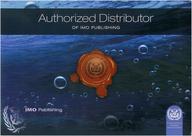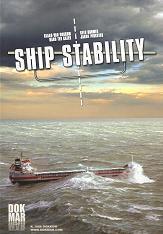Catálogo - LIBROS NÁUTICOS - Teoría del buque, Construcción naval
Ship Stability
Autor: Klaas van Dokkum, Hans ten Katen, Kees Koomen, Jakob Pinkster
Editorial: Dokmar
Año de edición: 2018 (6ª edición)
9789071500381
Encuadernación: tapa dura
176 pág. + 1CD
21,5 x 30,5 cm.
39,00€
Contenido:
Stability is a difficult concept to define. The idea of a stable character is readily grasped, although it is harder to put into words. The same applies to the notion of a stable ship, as stability is an intangible and complex entity.
Nevertheless, it plays an extremely important role in navigation. If a ship is unstable, there is immediate danger to ship, crew, passengers and the environment. Therefore, stability regulations have been established for all types of ships. Every crewmemeber of every type of ship is well versed in this domain.
The strengthe of this book is that stability in made visible, accessible and understandable for everyone through the many photos, figures and drawings contained within. It is highly suitable for all levels of professional training as well as for those involved with pleasure craft.
Índice
1. GENERAL
1.1. Stability
1.2. Definition of stability
1.3. Examples of stability
1.4. The importance of stability
1.5. Important factors for stability
1.6. Who is responsable for stability
2. PRINCIPAL DIMENSIONS
2.1. Definitions
2.2. Dimensions
2.3. Positions of the schip
2.4. Proportions
2.5. Volumes and weights
2.6. The shape of the ship
2.7. General arrangement
2.8. Derivative quantities
2.9. Carpo capacity relative to density / stowage factor
2.10. Relation between the weight of the ship and the displaced water
2.11. Reserve buoyancy
2.12. Relationship between buoyancy and gravity
2.13. Relationship between the observed draft and displacement
2.14. Corrections of the draft readings
3. TRANSVERSE STABILITY
3.1. General
3.2. Stability of form and weight
3.3. Location of point B
3.4. Location of the metacenter, M
3.5. Model data
3.6. Center of gravity "G"
3.7. Level of capacity
3.8. The righting arm
3.9. Curve of statical stability
3.10. List momentum
3.11. Various topics
4. LONGITUDINAL STABILITY
4.1. The importance of longitudinal stability
4.2. The waterline´s Center Of Floattation (COF)
4.3. Moment to change trim per unit
4.4. Calculation of trim
4.5. Distribution of trim forward and aft
5. DAMAGE STABILITY
5.1. Ship stability in damaged conditions
5.2. Evolving points of view regarding damage stability
5.3. Calculation methods for sinking and trim due to damage
5.4. Determining damage stability
6. STABILITY WHILE UNDERWAY
6.1. Ship stability while underway
6.2. Dynamic stability while underway
6.3. Loss of quasi-static stability
6.4. Loss of dynamic stability
6.5. Broaching
6.6. Heavy-weather guidance
7. DOCKING, RUNNING AGROUND
7.1. Ship stability while docking
7.2. Running aground
8. SPECIAL TYPES OF SHIPS
8.1. Sailing vessels
8.2. Catamarans / swath
8.3. Crane ships
8.4. Fishing vessels
8.5. Supply ships
8.6. Dredging vessels
8.7. Submersible pontoon
8.8. Submarines
9. STABILITY SOFTWARE
9.1. Introduction and history
9.2. Arithmetic functions
9.3. Tools for loading software
9.4. Standards and requirements
9.5. Examples of loading software
10. HYDROSTATIC PARTICULARS
Credits: photographs and illustrations
Index
Abbreviations
Precio: 39,00 €, I.V.A. incluido (4%)
[ Volver ]


